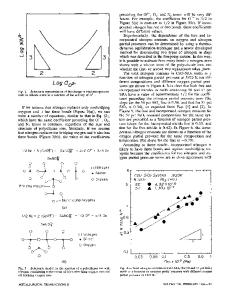Gate Oxides Beyond SiO 2
- PDF / 703,842 Bytes
- 9 Pages / 612 x 792 pts (letter) Page_size
- 4 Downloads / 316 Views
Darrell G. Schlom, Supratik Guha, and Suman Datta Abstract This year marks a major materials milestone in the makeup of silicon-based fieldeffect transistors: in the microprocessors produced by leading manufacturers, the SiO2 gate dielectric is being replaced by a hafnium-based dielectric. The incredible electronic properties of the SiO2/silicon interface are the reason that silicon has dominated the semiconductor industry and helped it grow to over $250 billion in annual sales, as reported by the Semiconductor Industry Association (SIA), San Jose, CA. The shrinkage of transistor dimensions (Moore’s law) has led to tremendous improvements in circuit speed and computer performance. At the same time, however, it has also led to exponential growth in the static power consumption of transistors due to quantum mechanical tunneling through an ever-thinner SiO2 gate dielectric. This has spurred an intensive effort to find an alternative to SiO2 with a higher dielectric constant (K) to temper this exploding power consumption. This article reviews the high-K materials revolution that is enabling Moore’s law to continue beyond SiO2.
Brief History Modern microprocessors consist of hundreds of millions of field-effect transistors (FETs). This transistor type that now dominates semiconductor technology was first proposed by J.E. Lilienfeld in 1928,1 but all early attempts to realize it in various semiconductor materials, including extensive attempts at Bell Labs by W.B. Shockley and G.L. Pearson, failed. This was due to the presence of surface states (electron traps) at the interface between the semiconductor and the overlying insulator.2 The breakthrough came in 1960 when D. Kahng made an FET using the interface between silicon and its native oxide, SiO2.3 Despite the superior transport properties of many other semiconductors (e.g., Ge, GaAs, InGaAs), silicon-based FETs dominate modern electronics because of the low density of traps that can be achieved at the Si/SiO2 interface. For over 40 years, this low-trap interface has been key to the performance of metal oxide semiconductor field-effect transistors (MOSFETs). A difficult challenge recognized by the semiconductor industry a dozen years ago was the identification and development of gate dielectrics and metal gate electrodes for silicon-based MOSFETs to allow computer chips to continue to be scaled to eversmaller dimensions.4 Such scaling (Moore’s
law5–7) enabled exponential improvements in MOSFET performance over the past four decades and made silicon-based electronics an ubiquitous part of modern life. The replacement dielectric and metal materials, whatever they might be, needed to have the incredible electrical properties of the SiO2 (or nitrided SiO2) gate dielectric and polysilicon gate stack to be supplanted. Further, they needed to be the electrical equivalent of an SiO2 layer having a physical thickness, Tox, of at most 1 nm.4,8,9 SiO2 itself cannot be scaled to such thin layers for two reasons. The first is the large and exponentially increasing leakage current
Data Loading...










